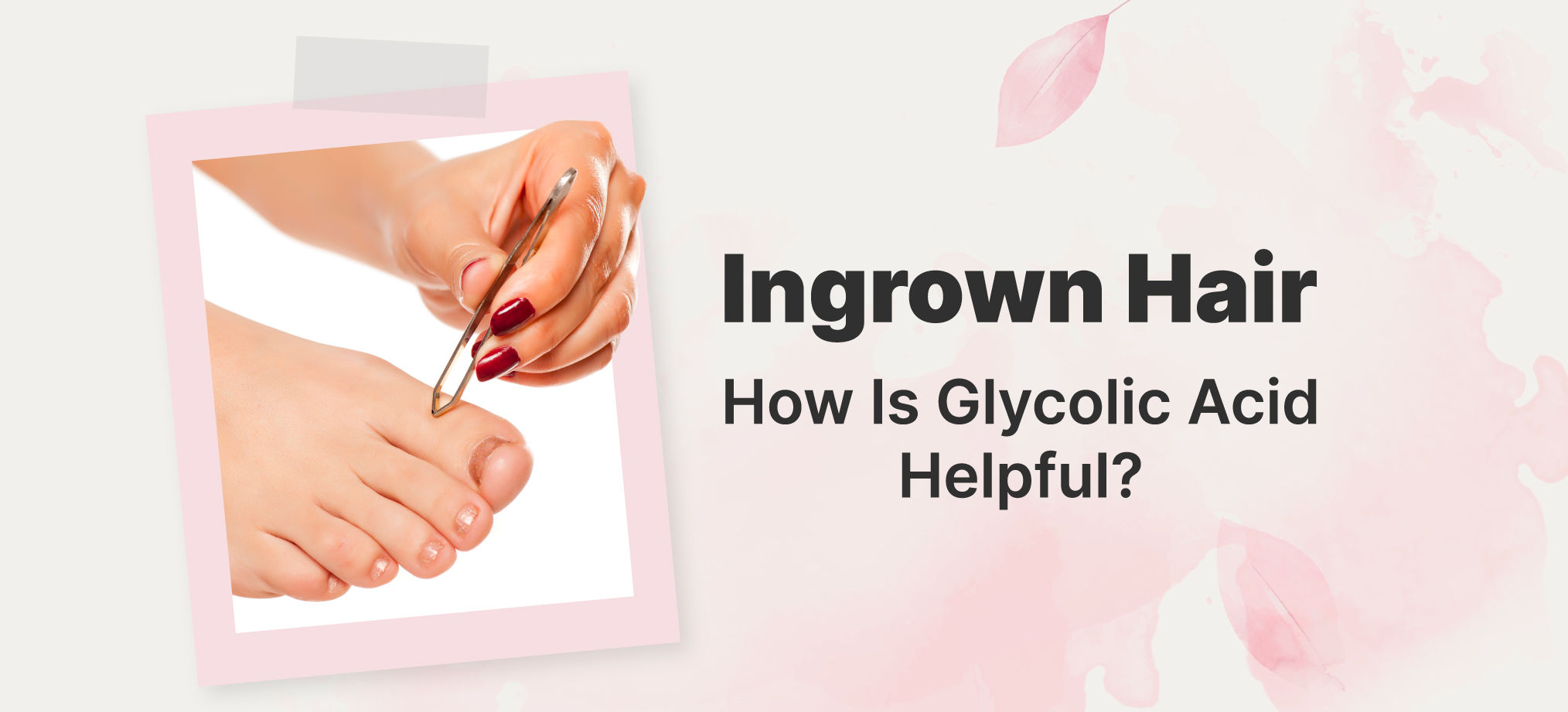General Health
5 Tips By Dermatologists To Prevent Ingrown Hair
3 min read
By Apollo 24|7, Published on - 30 November 2022, Updated on - 24 May 2023
Share this article
0
1 like

The unsightly intruder lurking under the surface of your skin - ‘ingrown hairs’, are the culprit behind that irritation and pain. They appear when hairs removed by shaving begin to grow again, but in a direction that curls into the skin.
It appears as an elevated bulge on the skin and may start to resemble a pimple. The lump frequently becomes itchy, sensitive, and crimson; it may also swell with pus.
Is it possible to get rid of them? Sure, read on as we discuss dermatologist tested tips to deal with ingrown hairs.
1. Maintain Unidirection While Shaving
Hair is cut at an acute angle when using a razor, increasing the likelihood that the regrown hair may get ingrown. In order to get the best results when shaving, you should go against the grain. Potentially, it would lessen the likelihood of future ingrown hairs. Here’s how you should do it, according to experts:
- Wet your skin and hair thoroughly with warm water.
- Soak the skin with some shaving cream or gel.
- Use a razor with one blade only.
- Only shave in the direction that your hair grows.
There are, however, better hair removal creams available. They can help avoid ingrown hair thanks to their method of dissolving the hair shaft. They are gentle on your skin.
Nonetheless, laser hair removal therapy is another excellent alternative for those who want to permanently get rid of hair. The treatment is safe, value for money, and saves you from the trouble of having to manually remove your hair over and over again.
2. Scrub Them Out
One of the most effective methods of warding off those annoying little irritants is regular exfoliation. Not with loofah or walnut scrubs but with the use of acids like glycolic acid. Due to the skin-cell-loosening properties of these acids, ingrown hairs can easily be prevented.
? Did You Know?
The combination of sebum and dead skin cells that obstruct hair growth is dissolved by glycolic acid, making it much easier for hairs to grow to the surface and preventing any inflammation from forming around the hair follicles.
3. Try Dry Brushing
The technique of "dry brushing," in which the entire body is brushed with a skin brush containing no water, is widespread in many Asian countries. What happens here? It removes hair out of the way and releases tucked-under ingrown hairs. It also prevents new ingrown hairs from developing. Keep in mind that dry brushing is a more intensive method of exfoliation; use it at most once per week.
? Did You Know?
The ancient Egyptians created some of the first elaborate beautification routines like dry body brushing!
4. Moisturise. Moisturise. Moisturise
If you don't follow up your exfoliation with a layer of a light, airy moisturiser, all your hard work goes in vain. However, the use of heavy creams is to be avoided as they might block your pores altogether.
5. Restricted Use of Tweezers
A sterile needle or tweezer is generally used to tug the hair straight once any portion of it rises above the skin's surface. One should ensure to do this only when the hair is above the skin. An infection may result from removing hair by squeezing the skin, allowing bacteria to penetrate the skin, leading to scars! Additionally, it's crucial to avoid pulling the hair out because doing so increases the likelihood that the hair will regrow giving rise to more ingrown hair.
? Did You Know?
If you pick at the ingrown hair, you risk infecting the follicle even more.
Final Note
Ingrown hairs are usually managed at home unless the pimples enlarge and swell with pus. They might be worse than ever in terms of discomfort, redness, and irritability. Also, people who have ingrown hair in significant regions will require medical attention. Consult a skin specialist in such circumstances without any further delay.
Medically Reviewed by Dr. Dhanunjay Reddy B
General Health
Leave Comment
Recommended for you

General Health
Here's Why You Must Have Coconut Water Everyday
The tropical and refreshing coconut water is more than just a thirst quencher. It's packed with vital nutrients and health benefits that can improve your overall well-being. In this blog, we have compiled a list of benefits to show you why coconut water should be a part of your daily diet.

General Health
5 Important Vaccines That Young Adults Must Not Skip
Vaccines aid in the development of immunity and provide protection against some serious diseases. As a child, you might have received many vaccinations, but as adults, there are a few vaccines that you must not skip.

General Health
Morning Routine Myths Debunked! 5 Things You Should Stop Believing In Right Now
From using the first saliva in the morning to consuming tea before brushing your teeth, there are several morning routine myths that you need to stop practising as they have no health benefits and can even affect your health adversely.
Subscribe
Sign up for our free Health Library Daily Newsletter
Get doctor-approved health tips, news, and more.
Visual Stories

Plant-based Foods That Are a Great Source of Iron
Tap to continue exploring
Recommended for you

General Health
Here's Why You Must Have Coconut Water Everyday
The tropical and refreshing coconut water is more than just a thirst quencher. It's packed with vital nutrients and health benefits that can improve your overall well-being. In this blog, we have compiled a list of benefits to show you why coconut water should be a part of your daily diet.

General Health
5 Important Vaccines That Young Adults Must Not Skip
Vaccines aid in the development of immunity and provide protection against some serious diseases. As a child, you might have received many vaccinations, but as adults, there are a few vaccines that you must not skip.

General Health
Morning Routine Myths Debunked! 5 Things You Should Stop Believing In Right Now
From using the first saliva in the morning to consuming tea before brushing your teeth, there are several morning routine myths that you need to stop practising as they have no health benefits and can even affect your health adversely.